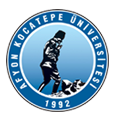| 1 |
Gains the necessary professional skills for classroom teaching. |
| 2 |
Knows the methods and techniques required for primary education and uses the necessary materials. |
| 3 |
She renews herself regarding her profession and the problems of the century she lives in. |
| 4 |
Becomes aware of the necessity of lifelong learning. |
| 5 |
Understands the effects of the profession on universal and social dimensions. |
| 6 |
Communicates effectively. (Uses Turkish effectively) |
| 7 |
Becomes aware of professional and ethical responsibility. |
| 8 |
Defines, critically examines and solves the problems of classroom teaching. |
| 9 |
It works with an interdisciplinary approach. |
| 10 |
Plans the necessary process to teach the required information. |
| 11 |
Looks at the events from a scientific perspective. |
| 12 |
Looks at events from a scientific perspective. |
| 13 |
Applies the basic knowledge of classroom teaching. |
| 14 |
Applies the most appropriate teaching strategies, methods and techniques by taking into account the developmental characteristics of students, their individual differences, the characteristics of the subject area and their achievements. |
| 15 |
Uses higher order thinking skills such as creative and critical thinking. |
| 16 |
Uses information and communication technologies at the level required by the field. |
| 17 |
Designs and implements artistic, physical and mental activities to ensure versatile development in the field of classroom teaching. |
| 18 |
Recognizes the development and learning characteristics of students. |
| 19 |
Explains the characteristics of national and international cultures. |
| 20 |
It provides all kinds of psychological, mental or physical support for student success. |



 Turkish
Turkish